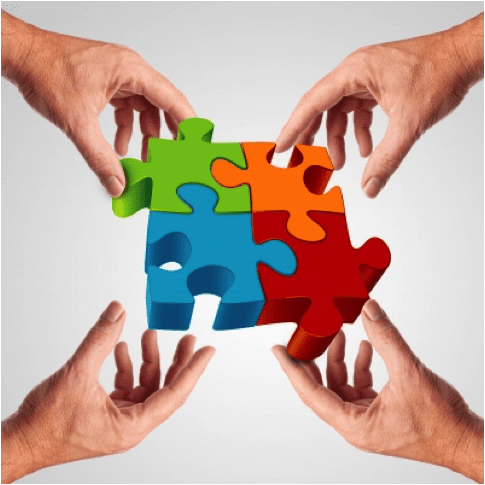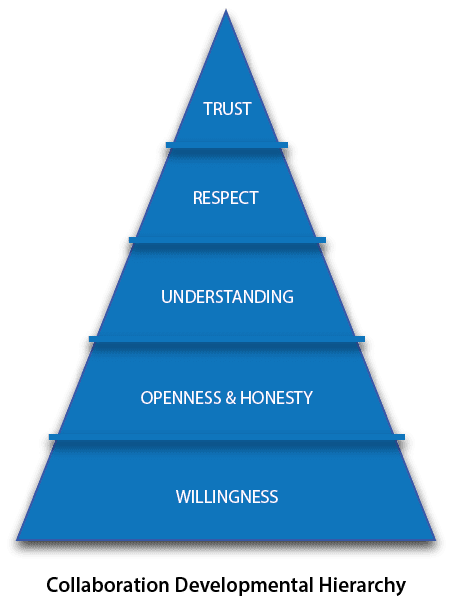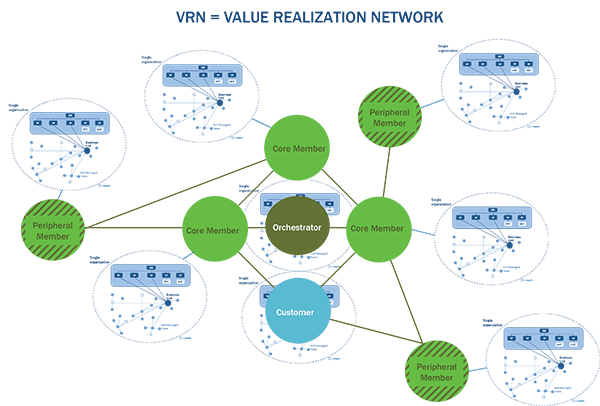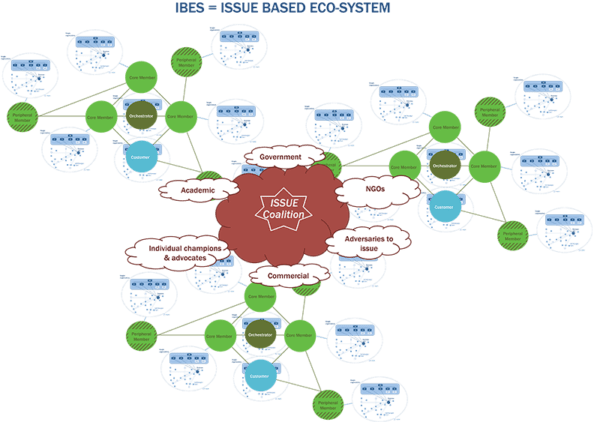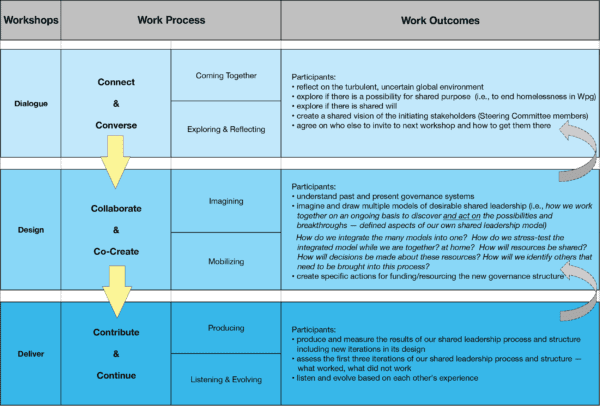In 2011, I wrote a blog echoing the current duality of living as a global society with a foot in each of two economic paradigms — competition and collaboration. At that time, I offered a middle ground of “do no harm” as a principle for converging the necessary integration when two seeming extremes confront us. One of the ways to apply this principle in corporate and civil life is adopting the four-fold mission to serve people, planet, purpose and profit.
In this short period of 2 ½ years, more people, governments and companies appear to be moving in the direction of doing less harm. In their work to better society and the planet, what is beginning to emerge is a solution economy where “governments provide room for creativity, businesses step up to build social outcomes into business practices, and investors innovate how social value is measured and exchanged” (Eggers & MacMillan 2013). More importantly, what all of these stakeholders are coming to realize is they alone cannot solve our wickedly massive and complex social problems — climate change, natural disasters, healthcare, AIDS, hunger/poverty, social injustice, international drug trafficking, nuclear weapons/energy/waste. Only in collaboration with each other are society’s stakeholders able to create, apply and innovate solutions with mass appeal and functionality.
If collaboration is key in a solution economy, then willingness to level the playing field (share power) and transparency (openness and honesty) are key to expressing the collective capacity of all contributors. As viewed in the Developmental Hierarchy below, each rung on the collaboration ladder births the potential for its successor. The willingness to work together in a relationship where decision-making power is shared enables the possibility for open and honest dialogue. In the unfolding dialogues addressing stakeholders’ needs, interests and assumptions, understanding and acceptance of each other’s diversity evolves. A natural outcome of “coming to know one another” is a tolerance and respect for unique strengths and limitations and where they are best applied. The experience of collaboration ultimately enables individuals and collectives to trust themselves and each other.
Ignoring the changing ways solutions are now rapidly developed and deployed
presents its own risks. Countries [governments, companies and people] that
cultivate connected ecosystems gain the advantage of accelerated growth in
the scope and scale of potential solutions, while others that rely wholly on
government [or themselves] will increasingly struggle to keep up. As citizens,
we know which side we’d prefer. The question is how, as a society, to get there.
William D. Eggers & Paul MacMillan
How does a society get there? Illustrated below are two emerging forms of organizing these connected ecosystems referenced by Eggers and MacMillan. The main difference between the two — the Value Realization Network (VRN) collaborates around a mutually beneficial shared value that has an economic imperative for its members; the IBES (Issue-based Ecosystem) collaborates around a shared value that has a social imperative to resolve a wicked social problem.
VRNs form when multiple entities, both private and public, work together to create value as defined by the customer (i.e., a product or service such as a new treatment for cancer). Members are dispersed geographically, facilitated by communication technologies and guided by high-level processes involving exploration, discovery, imagination and negotiation. The circles or nodes indicate people or roles — orchestrator, customer, core members, peripheral members, single organizations. The connecting lines are the interactions among these members that produce economic deliverables — knowledge, financial value and other benefits. In form, VRNs range from value chains to industry-specific multiple-actor networks. While many firms operate together in this system of partnerships and alliances, control is usually vested in an “orchestrator” who takes on the primary coordination role for the delivery and monetization of the value proposition or mission.
In addition to individual enterprises and VRNs, IBES embodies a coordinating Issue Coalition made up of governmental/non-governmental organizations, academia, commercial enterprises and individual champions or advocates. What all hold in common is the shared will to resolve a societal wicked problem that affects every organization and/or person but no one sector can solve alone. A temporary eco-systemic structure is required, which addresses ideals rather than profit. However, these ideals eventually need to be monetized through VRNs and/or individuals to be viable in the economic context. IBES attracts passion, creativity and initiative into non-directed self-forming groups intent on emerging solutions from their interactions among these networks of trust.
An example of an IBES in today’s solution economy is the Equitable Food Initiative (EFI) where produce farmers, workers and retailers (i.e., Costco) come together to improve working conditions, pesticide management and food safety.
As a global society where wicked complex problems are becoming our daily experience, we are faced with adopting an entirely new collaborative skill set in order to adapt. I use the process below with my clients to enable their adaptability.
What one action can you take today to enhance your trust — your ability to collaborate?
Source:
Eggers, W. D., & P. MacMillan. 2103. The Solution Revolution: How Business, Government, and Social Enterprises are Teaming Up to Solve Society’s Toughest Problems, Harvard Business Review Press.

